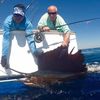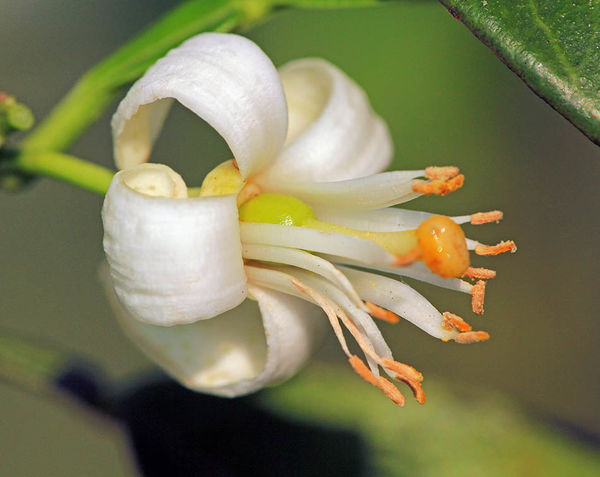Extension tubes v. Close up Rings
Oct 29, 2017 09:48:17 #
imagemeister wrote:
Ever hear of the Canon 500 and 250 D's ??
I have the Nikon version. Very high quality and no discernible loss of IQ. Bottom line: there’s a cheap option for almost everything—and you generally get what you pay for.

Oct 29, 2017 09:49:19 #
Oct 29, 2017 09:52:51 #
They are just like scewing in any front filter. No issues like TC’s. Good tools, some are hard to find.
Oct 29, 2017 10:19:02 #
sueyeisert
Loc: New Jersey
I just got the Canon D250 and D500 lenses. I like not having to change lenses outside.
Oct 29, 2017 10:20:51 #
sueyeisert wrote:
I just got the Canon D250 and D500 lenses. I like not having to change lenses outside.
Yes, much more user friendly than tubes ....
Oct 29, 2017 10:34:13 #
markinvictoria
Loc: Victoria TX
tshift wrote:
Hi. I will have to get my tubes out I haven't used in awhile. I know you can auto focus with them, don't remember if you have to use manual only!!
Tom
Tom
My Kenko extension tubes work automatic...even with the old screw drive lenses. Only problem is you lose some light and can't focus to infinity. No need to shoot in manual mode unless you are using the cheap extension tubes without electrical contacts or the screw drive extension.
Oct 29, 2017 11:38:11 #
photodoc16 wrote:
Richard,
I guess I must be. There doesn't seem to be any other option except the extension tubes and the screw on filter types. Is there?
Thanks,
Photodoc16 (Richard)
I guess I must be. There doesn't seem to be any other option except the extension tubes and the screw on filter types. Is there?
Thanks,
Photodoc16 (Richard)
Bellows.
I prefer the tubes over the diopter lenses but have used both with success.
Oct 29, 2017 12:37:41 #
amfoto1
Loc: San Jose, Calif. USA
photodoc16 wrote:
I was told today by a Canon rep at a Photoexpo sho... (show quote)
I know what "macro extension tubes" are... I've used them for 25-30 years or more and always have a few in my camera bag.
But I have no idea what a "close-up ring" is...
I'm familiar with "close-up filters" (usually cheap, single element, poor quality glass, often sold in sets of four or five) and "auxiliary/close-up lenses" or "diopters" (usually more expensive, much better quality and multi-element construction). Over the years, I've also used some of these... Stopped using the "filters" after trying some and finding they destroyed image quality. The only one I have now for use with a couple of my DSLRs lenses is a 77mm Canon 500D diopter. (I've got an auxiliary close-up lens for a point n shoot camera, too, but can't recall the last time I used it.)
I'm also familiar with "reversing rings" and "reverse stacking rings", that allow one to turn a lens around and use it for macro.
But "close-up rings"? Never heard of them.
Assuming we're talking about close-up filters or other optical screw-in auxiliary lenses to boost magnification, some work pretty well, but the good ones cost as much or more than macro extension tubes.
I just find macro extension tubes much more generally useful. They can make any lens closer focusing....have no optics to mess with image quality... and are dead simple to use. Some lenses tend to vignette and/or go soft at larger apertures when used with them, but those can be an interesting and useful effects.
Your Tokina 100mm goes to 1:1 or life-size magnification. A lot of people who use macro lenses never actually use the full potential of a 1:1 lens, which is to render a 24x36mm area on full frame or about a 13x23mm area on APS-C cameras. But if you find yourself wanting higher magnification, I'd recommend using a macro extension tube first... high quality diopter second.
A set of high quality Kenko macro extension tubes costs $109. That includes 12mm, 20mm & 36mm tubes, which can be used singly or stacked for 7 different possible amounts of extension. Longer focal length lenses need more extension to significantly increase magnifications. Theoretically, to get to full 1:1 with a 50mm lens requires 50mm of extension.... or 100mm with a 100mm lens.... etc. However, this doesn't take into account the lens' native magnification potential. For example, any extension at all will push a 100mm macro lens already able to do 1:1 on its own to even higher magnifications. I've used 12mm tubes on 20mm lenses and things touching the front element of the lens were in focus. And I've used 36mm or more extension on 500mm lenses to simply make the lens a bit closer focusing, nowhere near macro magnifications.
In years past, many macro lenses were only 1:2 capable on their own (half life size, to keep the lens size reasonable) and relied upon a matched extension tube to increase magnification beyond that.
Vintage Tamron SP 90mm f/2.5 macro lens (1:2) with 20mm Kenko extension tube:
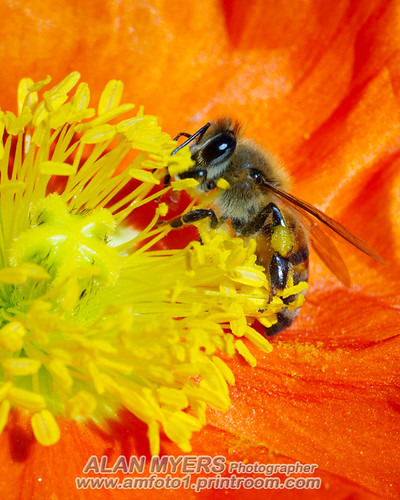
Canon EF 20mm f/2.8 lens with 12mm macro extension tube:
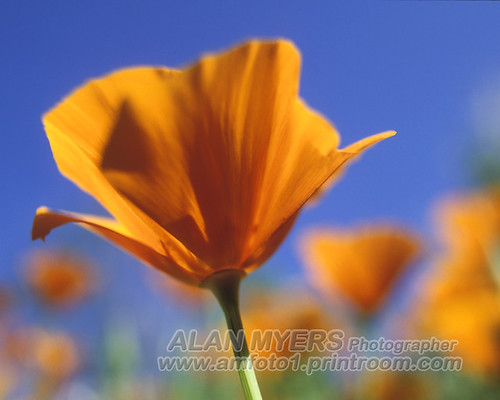
Canon EF 50mm f/1.4 lens with 25mm Canon extension tube:

Canon EF 85mm f/1.8 lens with 20mm Kenko extension tube:

Canon EF 70-200mm f/2.8 IS USM lens with 25mm Canon extension tube:

Canon EF 300mm f/2.8 IS USM lens with 36mm Kenko extension tube:
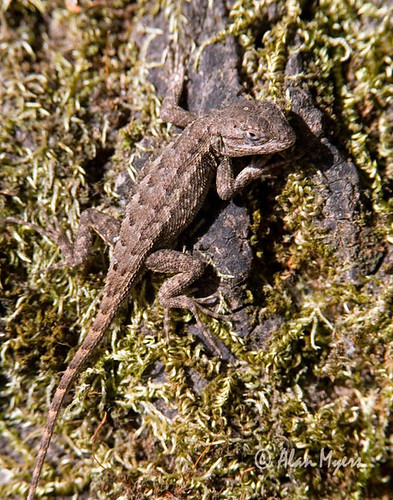
Canon EF 500mm f/4 IS USM lens with 36mm Kenko extension tube:

Compare the cost of a high quality, 77mm Canon 500D close-up diopter: $149. Also note that it's limited for use on lenses that have a 77mm filter thread. Other brands may offer more variety, but in Canon the 500D is only available in 52mm, 72mm and 77mm sizes. They also offer the stronger 250D in 52mm and 58mm sizes. They don't make one in the 55mm filter size used by the Tokina AT-X Pro 100mm macro lens. You might be able to use a step ring, but that may change the effect by moving the close-up lens farther from the lens' front element and will probably preclude using a hood on the lens (which can be important because even high quality close-up are diopters commonly uncoated or have minimal anti-reflective coatings, so are more prone to flare issues).
I bought the 77mm 500D primarily for use on my 70-200mm f/2.8 and occasionally on 24-70mm f/2.8 lenses (the newer version of the latter now uses an 82mm filters, so that's no longer possible). I really use it very little. Even the higher quality close-up diopter tends to reduce contrast and color saturation a lot with the 70-200mm.
Much more frequently I use the macro extension tubes (a Kenko set and several Canon OEM in different sizes, which are only sold individually and cost a lot more than the Kenko).
Finally, I hope "close up rings" aren't those really inexpensive versions of macro extension tubes... often less than $25 and sometimes only $10 or less. Those lack any electronic contacts and are fine with vintage lenses that have a mechanically controlled aperture.... but are pretty much worthless with modern lenses with AF and electronically controlled apertures, such as your Tokina 100mm macro lens. Don't waste your money.
EDIT:
Regarding bellows... unless you spend a small fortune on a Novoflex, those are of very limited use with modern lenses that control the lens aperture electronically. All the "affordable" bellows I'm aware of have no electronic contacts built in, so are really only usable with lenses that have mechanical means of controlling the aperture. I used those a lot in the past with vintage gear, but don't use them today. Also be aware that bellows - which are essentially just extra-long and adjustable extension tubes - are rather bulky to carry around and are rather fragile and easily damaged.
Instead of bellows, Canon offers their MP-E 65mm f/2.8 Macro lens. This manual focus lens doesn't focus to infinity or anywhere even close. In fact, it's minimum magnification is 1:1 so the farthest away it can focus is where most other macro lenses stop. It's highest magnification is 5:1 or five times life size, which is close the maximum possible with bellows and specialized lenses for use on them. The Canon MP-E 65mm can fill your viewfinder with a single grain of rice. The following is a newly hatched "baby" snail about 6mm long, shot at around 3.5:1 magnification with that lens (at an effective f/90, BTW)...
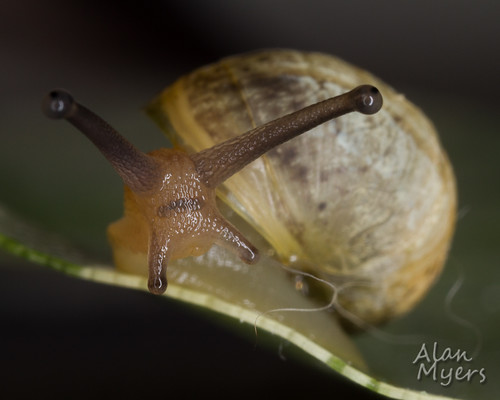
Here's the MP-E 65mm on one of my modern cameras (with ML-14EX Ring Lite), compared with a bellows system that I used years ago...
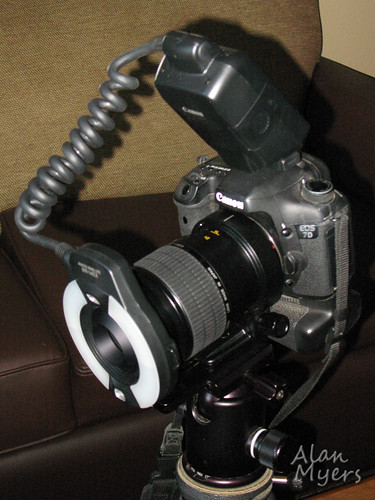

Both the above are pretty much "tripod only" rigs.
Regarding never changing lenses outdoors.... That's utterly silly. For one, the whole point of an interchangeable lens camera is the ability to quickly and easily adapt the camera and lens for different purposes. But also, if you think your camera and lens are "sealed" against dust intrusion so long as you don't remove the lens, you're kidding yourself. In fact, many modern zoom lenses are "dust pumps", in the sense that they "inhale" and "exhale" air (and the dust in it) when you zoom/focus them. In particular, any lens or zoom that's not internal focusing and internal focusing pulls in a good deal of air when the lens extends in length, then pushes it back out (some into the camera itself) when the lens retracts with the opposite adjustments. Even IF/IZ lenses have to move their optical elements and groups around internally, causing some air movement. NO LENSES ARE FULLY SEALED.... they can't be. Finally, I guarantee you that you have dust motes in the indoor air, too, that can just as easily get into your camera or lens. So stop being obsessive and change your lenses when needed, with reasonable care and precautions.
I change lenses all the time in the field and probably work in much dustier conditions than most people, with little problem (thanks to self-cleaning sensors!)...

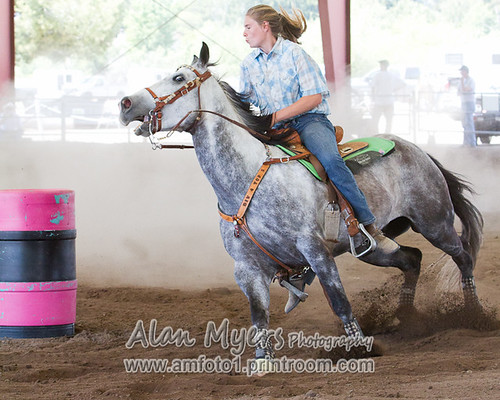
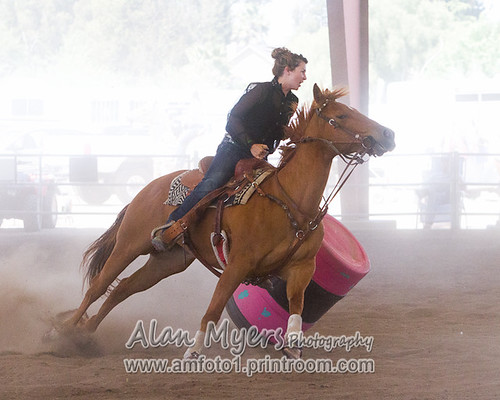
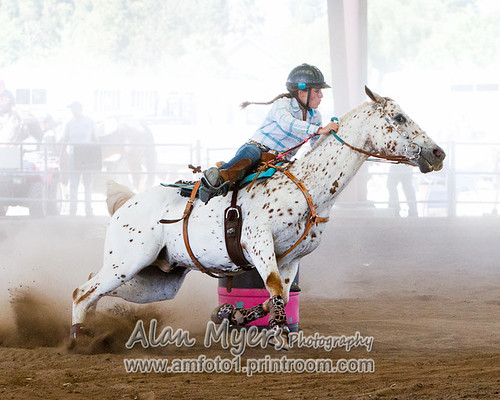
Oct 29, 2017 13:36:18 #
Robert Bailey
Loc: Canada
Yes, bellows units are still manufactured. They used to be extremely expensive,
but as I mentioned above, the prices have plummeted due to cheap versions
from Asia.
I paid $700 (US) for a USED Nikon bellows unit years ago,
but you can now buy a NEW 3rd party unit for under $100.
but as I mentioned above, the prices have plummeted due to cheap versions
from Asia.
I paid $700 (US) for a USED Nikon bellows unit years ago,
but you can now buy a NEW 3rd party unit for under $100.
Oct 29, 2017 13:53:38 #
Yes when I used to shoot outdoor motocross their was often a cloud of dust in the air up to 50 or 60 feet. You were in it like a fog and really only realized it was there when you got far enough away from the track to see it hovering over head...
Oct 29, 2017 14:04:37 #
photodoc16 wrote:
I was told today by a Canon rep at a Photoexpo sho... (show quote)
I know you and no one else has mentioned tele-extenders - but they can also be used quite well to get more magnification.
And since this is getting to be a show and tell, I will add mine .......
Canon 70-200 f4 L non-IS with Tamron SP 1.4X and Canon 500D close up lens on 60D ....hand held.
Oct 29, 2017 14:16:30 #
photodoc16 wrote:
I was told today by a Canon rep at a Photoexpo sho... (show quote)
Many good answers so far. The Canon 250D and 500D are excellent close up lenses, but not inexpensive. You can always use a step down ting to fit them to smaller filter thread lenses. Canon extension tubes give full autocontrol, but are also not inexpensive, but a strong and well built.
This example was with a close lens on a EF-S 60mm macro lens.
Oct 29, 2017 14:22:15 #
Extension tubes dont have to be expensive. I bought the better tubes with the electrical connections. I find I dont use them, when using the tubes I always have it on Man Focus. The Focus with the tubes just isnt as sharp. So in my case a $15.00 set would have been enough.
Oct 29, 2017 14:56:13 #
bdk wrote:
Extension tubes dont have to be expensive. I bought the better tubes with the electrical connections. I find I dont use them, when using the tubes I always have it on Man Focus. The Focus with the tubes just isnt as sharp. So in my case a $15.00 set would have been enough.
If you are using a tube on a telephoto lens for closer focusing, you WILL want the AF ! - but not so much for true macro work on shorter lenses.
Oct 29, 2017 15:13:35 #
wdross
Loc: Castle Rock, Colorado
photodoc16 wrote:
I was told today by a Canon rep at a Photoexpo sho... (show quote)
Diopter filters will "change" the lense desgn slightly. It changes the corners of the image the most. That is why it affects wide angle lenses more than telephotos. Tubes do not affect the optics. But tubes also affect the image by the fact it was not originally designed for the focal plane being that far back. The extension tubes tend to be the better way to go, but not always. There is no "magic bullet" where there is no image loss at all.
If you want to reply, then register here. Registration is free and your account is created instantly, so you can post right away.

